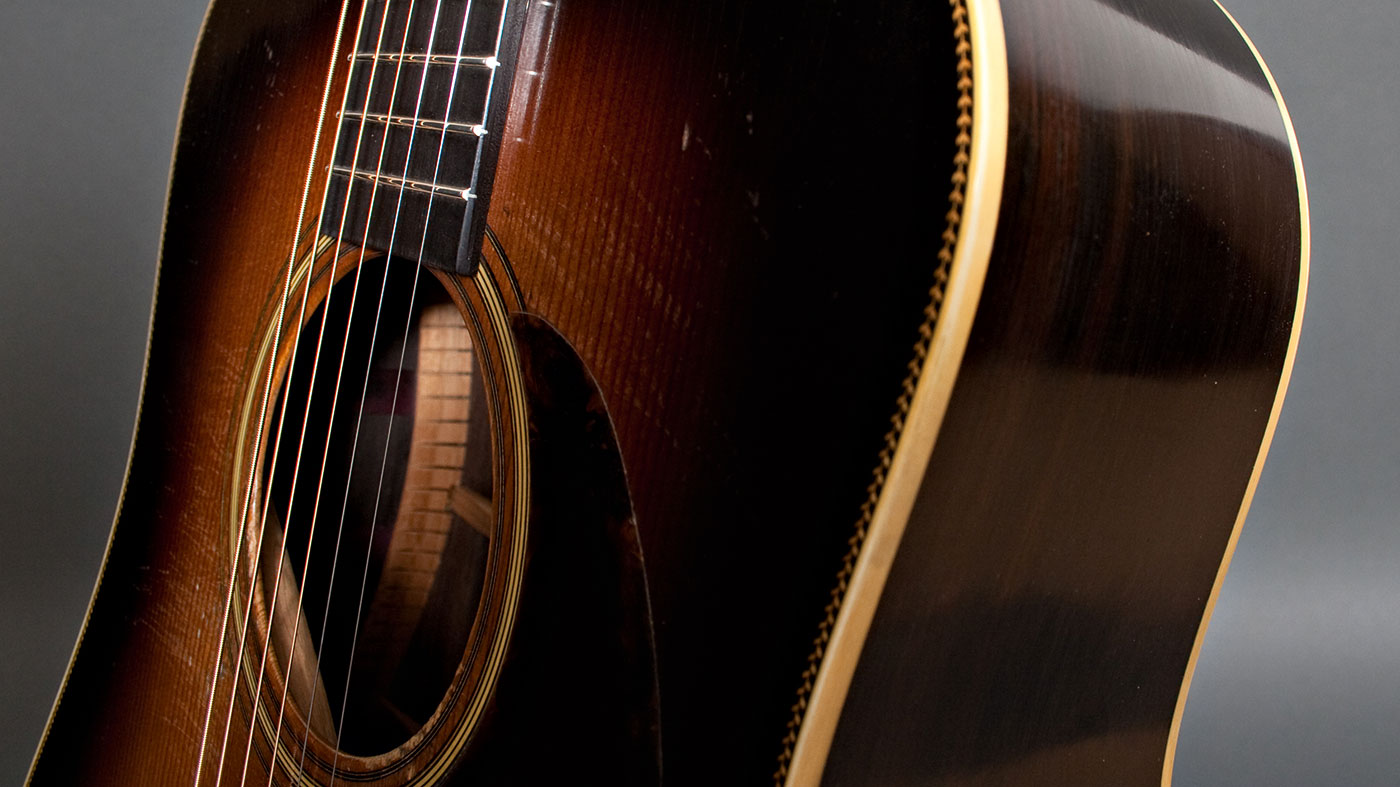Mandolin Orange: “The mandolin made me think of the guitar as more of a melodic instrument”
Andrew Marlin on how going from six strings to four can revolutionise your playing

Andrew Marlin, one half of North Carolinian bluegrass/old-time duo Mandolin Orange, has had a diverse journey as a musician. His start came on drums, before he delved into hard rock, metal and the guitar. The musical making of him, though, came from a more unusual - though perhaps in this context, obvious - place: the mandolin.
“I’m glad that I’ve gone through all the avenues that I have,” he tells us. “Because I think it makes me approach folk and old-time music differently than some other folks. Not better, but it gives me my own little corner in this world.”
Oddly enough, I feel like there’s a lot of correlation between bluegrass and heavy metal
His duo with partner Emily Frantz - who shares acoustic duties with Marlin and plays a mean bluegrass fiddle - has expanded with the band’s popularity, encompassing a live rhythm section and an electric guitarist. They’re now major players in the US Americana scene, gaining renown across six albums and numerous sold-out tours; all while updating old-time fiddle music with a songwriter’s ear and progressive politics. Their latest record, Tides Of A Teardrop, is their first ‘band’ album, freeing Marlin and Frantz up to focus on their melodic leanings. It’s beautifully constructed and, at first listen, might be considered the polar opposite of the metal that soundtracked Marlin’s formative years.
“Oddly enough, I feel like there’s a lot of correlation between the two,” argues Marlin. “Heavy metal is a very rhythmic style, rooted on simple riffs and really great grooves - old-time fiddle music does the same thing. It locks in, usually to an A part and a B part, which consist of pretty simple riffs. When the band gets together and play those then the notes become almost rhythmic instead of melodic. You start off with this melody and by the end of it everyone’s hitting different emphasis notes at different times.”

Upside-down guitar
It’s one of the things that initially drew Marlin to this music and he stills lights up when he talks about it, so what advice does he have for any six-stringers feeling inspired to make the leap themselves?
“I feel like you might find yourself with a few extra gigs if [you] pick up the mandolin!” starts Marlin. “But, the mandolin, really it’s laid-out like an upside down guitar or bass: instead of E-A-D-G, it’s G-D-A-E, so you know all the chords - you just have to think about them like a left-handed player. As soon as you’ve learned one song, you’ve pretty much learned five songs.”
It’s taught me how to find my style when I play leads. It helps me when I go to take a solo on guitar now
The advantages flow both ways, of course: “I think diving into the mandolin made me think of the guitar as more of a melodic instrument. It’s taught me how to find my style when I play leads and how to express myself melodically on the instrument. It helps me when I go to take a solo on guitar now.”
Get the MusicRadar Newsletter
Want all the hottest music and gear news, reviews, deals, features and more, direct to your inbox? Sign up here.
You can hear this sublime acoustic solo work - on both instruments - woven throughout Tides Of A Teardrop. Like You Used To’s roving lead lines, which intertwine and reflect Josh Oliver’s twanging electric are a highlight. However, when we force Marlin to pick a favourite child, he tells us he’d go for When She’s Feeling Blue.
“It’s probably the slowest song on the record and I tried to do this Willie Nelson-type acoustic guitar lead,” he explains. “I tried to just dive in and play the melody and get this kind of grunge on the acoustic guitar. I played this little 1920s Larson Brothers ladder-braced guitar and it just has this really twangy tone. It sounds like the guitar is going to fall apart, but I love it and I think it captured that feel.”
As an instrumentalist Marlin has benefitted from a cross-discipline schooling that many of us won’t get close to achieving. But there are also some principles that his experience has taught him prove universal in their application. “A buddy of mine used to say ‘absence of limitation is the death of art’ [originally attributed to Orson Welles] and I think that helps me. It says that it’s okay that you’re limited in your own abilities - that’s what makes your art your art.”

Prepare for (Pre) War
The US guitar maker who’s winning hearts and minds
While Marlin favours John Sullivan’s mercurial mandolins, when playing six-string it’s local luthiers Pre War Guitars that have earned a place in his well-worn live arsenal.
“If you get an opportunity to get one of those - get it. They’re blowing up and I think they’re going to be the new standard for [acoustic] guitars. I’ve known those guys for a long time and when they started building these particular guitars, they found the fairy dust! We play a Model 28, which is like a rosewood Martin D-28 copy and it’s one of my favourite guitars.”
Matt is a freelance journalist who has spent the last decade interviewing musicians for the likes of Total Guitar, Guitarist, Guitar World, MusicRadar, NME.com, DJ Mag and Electronic Sound. In 2020, he launched CreativeMoney.co.uk, which aims to share the ideas that make creative lifestyles more sustainable. He plays guitar, but should not be allowed near your delay pedals.
“Beyond its beauty, the cocobolo contributes to the guitar’s overall projection and sustain”: Cort’s stunning new Gold Series acoustic is a love letter to an exotic tone wood
“Your full-scale companion. Anytime. Anywhere… the perfect companion to your full-size Martin”: Meet the Junior Series, the new small-bodied, travel-friendly acoustic range from Martin












